A full day of conference, three parallel tracks:
- Two tracks about Innovations in Eclipse projects, including the use of Eclipse for Embedded Software development and M2M
- One track about OSS Business Models, co-organized with Digital Place and Aerospace Valley whose successful structuring project OPEES gave birth to the Polarsys Industry Working Group
The talks highlighted with a blue background concern more specifically the tools and topics developed in Polarsys.
This program is subject to change. We invite you to visit it regularly.
Keynotes
How Eclipse Works, Ian Skerett, Eclipse Foundation
By any measure, Eclipse has been a very successful open source community, and it has certainly contributed immensely to the worldwide success of Java. It has also been for many years, one of best examples of a vendor-neutral, free Java community.
But there is one thing in particular that sets Eclipse apart: it always ships on time. For eight straight years, the Eclipse community has shipped its major release on time to the day. How the heck does that work? This talk will focus on the processes, community interactions, and most importantly, the cultural aspects of Eclipse that makes this possible.
The ongoing success story of Open Hardware, Frédéric Jourdan, Snootlab
 Open Source Software has been changing the way business is being done in the last 10 years, and Open Hardware is poised to follow the same path, with pretty similar business models.
Open Source Software has been changing the way business is being done in the last 10 years, and Open Hardware is poised to follow the same path, with pretty similar business models.
By following the success stories of Arduino and the French company Snootlab, this keynote will give you a better understanding of what Open Hardware is nowadays, from hobbyists tinkering with “Do It Yourself” electronic kits, to professional 100Gb Internet Exchange equipment.
Technical innovations
Understanding Eclipse Modeling, Cédric Brun, Obeo
 “Modeling”. Behind this simple word lies strong opinions, misconceptions, obscure acronyms, meta-things and marketing campains far from the reality of developping an application. But if you look more closely, this forest hides a fairly small set of simple, powerful yet flexible concepts. If you zoom in again, you’ll see awesome technologies. While some “dreamers” are giving more and more abstract discourses about modeling, on the field these technologies are pervading, even close to the bare metal in the Eclipse platform itself. In 2012, you might already know you can generate rich applications, but what about web technologies, PHP, C ?
“Modeling”. Behind this simple word lies strong opinions, misconceptions, obscure acronyms, meta-things and marketing campains far from the reality of developping an application. But if you look more closely, this forest hides a fairly small set of simple, powerful yet flexible concepts. If you zoom in again, you’ll see awesome technologies. While some “dreamers” are giving more and more abstract discourses about modeling, on the field these technologies are pervading, even close to the bare metal in the Eclipse platform itself. In 2012, you might already know you can generate rich applications, but what about web technologies, PHP, C ?
This talk will start by taking a step back about what is all this modeling stuff, what it isn’t and what technologies the Eclipse Modeling project brings in this regard. The focus will be placed on tools and components useful to build any kind of application and not just Eclipse based ones : EMF, Acceleo. You’ll come back with examples of how you could leverage those technologies for your own project.
Cedric leads the Modeling Amalgamation and EMF Compare components, is commiter on several Eclipse Modeling projects (Acceleo), and his both member of the Eclipse Architecture and Planning Councils. He also is the CTO of Obeo, building a broad range of products, from software modernization to enterprise architecture and software factories.
Using JavaFX2 with Eclipse, Sébastien Bordes
 The next UI revolution has began, Swing and SWT will become AOA (Awful Old Api), the brand new JavaFX will lead the UI interoperability race for years to come.
The next UI revolution has began, Swing and SWT will become AOA (Awful Old Api), the brand new JavaFX will lead the UI interoperability race for years to come.
I will begin with a quick overview of JavaFX 2 : Architecture, Scene Graph and API main features.
Then we are going to see how JavaFX could be integrated into an EclipseRCP application with FXCanvas widget.
To conclude we will start to code a JavaFX snippet using Eclipse and E(fx)clipse plugin.
Using Xtext in Systems Development, Stephan Eberle and Amine Lajmi, Itemis
 Building Domain-Specific Languages (DSLs) with Xtext has been a great success in the software engineering community. Indeed, the Xtext framework is capable of generating complete language interpreters and full-blown editors, all from a single grammar definition, sometimes with only a few clicks. However, in real-world system development, applications need to be modeled through multiple orthogonal but interdependent views, each of which is focused on a specific aspect of the system. Sometimes, this involves the usage of different DSLs, sometimes a combination of textual, graphical and form-based editing, and sometimes even both. This raises common problems of synchronization between editors, and how one can maintain consistency across different semantic models when their graphical, textual, and form-based representations are edited.
Building Domain-Specific Languages (DSLs) with Xtext has been a great success in the software engineering community. Indeed, the Xtext framework is capable of generating complete language interpreters and full-blown editors, all from a single grammar definition, sometimes with only a few clicks. However, in real-world system development, applications need to be modeled through multiple orthogonal but interdependent views, each of which is focused on a specific aspect of the system. Sometimes, this involves the usage of different DSLs, sometimes a combination of textual, graphical and form-based editing, and sometimes even both. This raises common problems of synchronization between editors, and how one can maintain consistency across different semantic models when their graphical, textual, and form-based representations are edited.
 In this session, we will firstly give an overview of Xtext’s most common features. Secondly, we will cover a variety of use cases showing how Xtext can be used in a multiple views scenario, including: synchronizing semantic models behind Xtext DSLs with other models, embedding Xtext editors in form editors, partial model editing with Xtext, synchronized editing with Xtext and Graphiti. All these use cases leverage the Sphinx framework, an industrial-strength modeling platform that greatly supports the creation of integrated model-driven tool environments relying on one or multiple modeling languages.
In this session, we will firstly give an overview of Xtext’s most common features. Secondly, we will cover a variety of use cases showing how Xtext can be used in a multiple views scenario, including: synchronizing semantic models behind Xtext DSLs with other models, embedding Xtext editors in form editors, partial model editing with Xtext, synchronized editing with Xtext and Graphiti. All these use cases leverage the Sphinx framework, an industrial-strength modeling platform that greatly supports the creation of integrated model-driven tool environments relying on one or multiple modeling languages.
Developing GWT applications with Eclipse, Sami Jaber, DNG Consulting
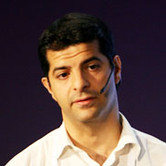 This presentation will focus on Google Web Toolkit, an Open Source technology which aims to simplify the development of HTML 5 Web Application in Java and Eclipse. We will unveil the Development Environment and the productivity brought by GWT. This session is about showing how to make better Web applications with less money.
This presentation will focus on Google Web Toolkit, an Open Source technology which aims to simplify the development of HTML 5 Web Application in Java and Eclipse. We will unveil the Development Environment and the productivity brought by GWT. This session is about showing how to make better Web applications with less money.
Sami Jaber is a technical Architect and a well-known entrepreneur, founder of DNG Consulting, a company focused on Web technologies. He works with business critical systems and helps big and small companies to migrate to new technologies. Sami speaks regularly for many conferences (Devoxx, Symposium DNG, IS University…) where he talks about HTML 5, GWT and .NET. He has published several widely-recognized technical articles in different topics and authored the book entitled “Programmation GWT 2″ (Eyrolles).
New components from Polarsys: Arcon, BIT
Jorge Juan Rodriguez, Indra and Gert Johansson, Combitech
 The talk will demonstrate how ArCon (Architecture Conformance Validation tool) can be used to validate systems to conform to architectural rules. The OSS tool works for UML/SysML modeling tools and uses a specific semantics of UML diagrams to formally specify rules and check the system model of interest.
The talk will demonstrate how ArCon (Architecture Conformance Validation tool) can be used to validate systems to conform to architectural rules. The OSS tool works for UML/SysML modeling tools and uses a specific semantics of UML diagrams to formally specify rules and check the system model of interest.
Gert Johansson works as business developer and senior systems engineering expert at Combitech AB in Linköping, Sweden.
Powering Hadoop and Big Data with Eclipse, Cédric Carbone, Talend
 Enterprises are faced with ever increasing amounts of data, and problems related to volume and usage demands have forced IT managers and developers to seek out new solutions. Fortunately, this has resulted in an explosion of innovation in massively parallel processing and non-relational data storage. Apache Hadoop, an open source software platform, has quickly become the technology of choice for large organizations in need of sophisticated analysis and transformation of petabytes of structured and complex data.
Enterprises are faced with ever increasing amounts of data, and problems related to volume and usage demands have forced IT managers and developers to seek out new solutions. Fortunately, this has resulted in an explosion of innovation in massively parallel processing and non-relational data storage. Apache Hadoop, an open source software platform, has quickly become the technology of choice for large organizations in need of sophisticated analysis and transformation of petabytes of structured and complex data.
Cédric Carbone will discuss how users can access, manipulate and store huge volumes of data in Hadoop and benefit from high-performance, cost-optimized data integration with ultimate scalability.
During this session, attendees will learn how to:
- Leverage the explosive growth of data
- Deploy and tap into the powerful architecture of Hadoop thanks to an Eclipse based graphical interface
- Process massive data volumes through a combination of Hadoop and open source architecture
Cédric Carbone, Talend CTO / Eclipse Foundation& OW2 Board Member
Model Versioning and Collaboration with EMFStore, Maximilian Koegel, EclipseSource
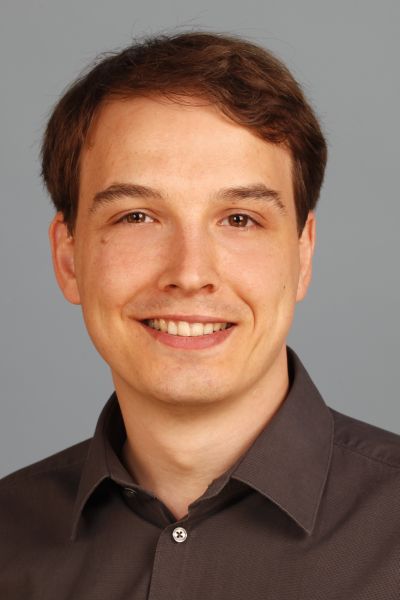 Although versioning of models and collaboration on models are essential use cases for any complex modeling application, they are only insufficiently addressed by existing Configuration Management Systems/Version Control Systems. Existing system are designed for textual artifacts, such as source code and do not take the complex internal structure of models into account.
Although versioning of models and collaboration on models are essential use cases for any complex modeling application, they are only insufficiently addressed by existing Configuration Management Systems/Version Control Systems. Existing system are designed for textual artifacts, such as source code and do not take the complex internal structure of models into account.
Therefore in the last decade a lot of research and development was undertaken to deal with these challenges and a number of technical solutions have been proposed.
In this presentation we will introduce and discuss the different approaches and their use cases. Furthermore we present the EMFStore Model Repository as one of the solutions in more detail. EMFStore is an Eclipse Project and provides a repository to collaboratively edit and version EMF-based models. We present its use cases, recent development and roadmap.
BIRT, Stefan Caracas, Actuate

Trop souvent, à la fin d’un projet BI, l’utilisateur est insatisfait : soit ses problèmes n’ont pas été pris en compte correctement, soit ses besoins ont évolué depuis leur définition. Selon de nombreuses études, il s’agit de la raison la plus fréquente d’abandon des projets BI, entraînant des pertes conséquentes en termes de budget, temps, ressources, ce qui constitue un risque inattendu et majeur pour une entreprise.
Pour éviter cette situation d’échec, Actuate préconise les méthode agiles qui encouragent la collaboration et l’itération entre les divers acteurs d’un projet. Les utilisateurs métier peuvent notamment apporter leur retour d’expérience et exprimer leurs nouveaux besoins avant de se retrouver face à un résultat fini, figé et insatisfaisant. Cette flexibilité, rendue possible par le partage d’un format de design universel, une expérience utilisateur intuitive unifiée et la réutilisation optimum des composants de rapport à travers toute l’architecture BI de l’entreprise, permet d’écourter considérablement les délais de mise en œuvre et de réduire les coûts de développements tout en renforçant l’adoption, facteur clé de réussite de tout projet BI.
Stefan Caracas a rejoint Actuate en 2007 en tant qu’Avant Vente Europe du Sud avant de devenir Commercial en 2011. Son expérience passée se focalise dans le domaine de la BI avec un centre d’expertise sur ces solutions, ayant travaillé en tant que consultant expert ou chef de projets BI pendant près de 10 ans. Il est titulaire d’un master en Business Intelligence et SIAD ( ESIAG ) et d’une Maîtrise Eco-Gestion spécialisation Finance. Son expérience sur les solutions BI du marché le fait populaire chez Actuate sur les analyses compétitives et l’architecture SI.
Integrating Requirements and Models with the Eclipse Requirements Modeling Framework, Michael Jastram, Formal Mind GmbH
 The Requirements Modeling Framework (RMF, http://eclipse.org/rmf) is a new Eclipse project for requirements engineering. The data model of RMF is based on the emerging Requirements Interchange Format (ReqIF), an OMG standard that is driven mainly by the automotive industry. RMF consists of a core that can read, write and validate ReqIF, and a GUI called ProR for working with requirements. Earlier versions of ReqIF are already supported by industry tools like Rational DOORS or PTC Integrity.
The Requirements Modeling Framework (RMF, http://eclipse.org/rmf) is a new Eclipse project for requirements engineering. The data model of RMF is based on the emerging Requirements Interchange Format (ReqIF), an OMG standard that is driven mainly by the automotive industry. RMF consists of a core that can read, write and validate ReqIF, and a GUI called ProR for working with requirements. Earlier versions of ReqIF are already supported by industry tools like Rational DOORS or PTC Integrity.
RMF is specifically designed for extendibility and integration with other tool offerings, leveraging Eclipse for this purpose. To demonstrate this, we will present an integration of ProR with Rodin, an Eclipse-based tool for formal modeling in Event-B. The integration supports the mixing of formal and informal specification elements via drag and drop, it support the highlighting of the formalized vocabulary directly in the requirements text, and tracks changes on traced artifacts. The tool integration is based on an approach for requirements traceability, developed by the University of Düsseldorf.
Integrations with other models are possible, and we are in contact with the Topcased community regarding an integration of ProR with UML or SysML models.
This presentation will provide a brief overview of RMF, including the current state of development and roadmap. We will present the various components of RMF, and provide a demonstration, if time permits. Using the Rodin integration as an example, we will demonstrate how seamless RMF can be integrated with other Eclipse-based offerings.
What Eclipse 4 will change for you, Olivier Prouvost, OPCoach
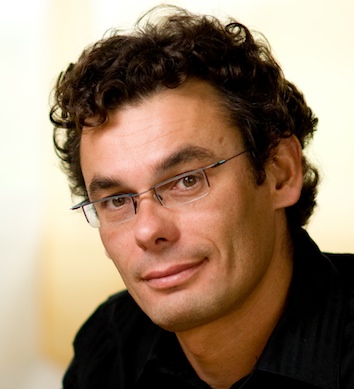 In June 2012, Juno (Eclipse 4.2) will become the official RCP architecture to develop applications. However, the Eclipse 3.8 release will be delivered also to ensure transition.
In June 2012, Juno (Eclipse 4.2) will become the official RCP architecture to develop applications. However, the Eclipse 3.8 release will be delivered also to ensure transition.
This talk will explain the differences between 4.2 and 3.8 and it will focus on the benefits of Eclipse 4 like : the application model, the dependency injection, the usage of CSS stylesheet… Finally it will try to answer to these questions : should we start with Eclipse 4 ? Should we keep on working with 3.X ? When should we migrate to 4.X ?
FCDT: using Eclipse CDT + FRAMA-C for advanced C static analysis in industrial context, Stéphane Duprat and Mathieu Velten, Atos
FCDT, for Frama-C Development Tooling is a set of features helping in using Frama-C for formal verification in C Code. Frama-C is a formal verification tool for C code. This is a framework plugin offering various static analysis, with gui and batch mode. But this is not a development tool.
That’s why we decided to create an integrated environment based on the Eclipse CDT to use Frama-C : This is FCDT.
With this integration, the user can launch automatic analysis by Frama-C in batch mode, throw the CODAN features of FCDT and get the static analysis warnings as markers in the CDT editor.
Another important feature is the text editor of the formal specification language of Frama-C : ACSL (for ANSI C Specification Language). We will explain why we chose to use Xtext to define our grammar ofr ACSL, and finally we will show you our architecture which will give you the possibility to plug any Xtext language into your CDT Editor.
Eclipse Koneki: Open source tools for M2M development, Benjamin Cabé, Sierra Wireless
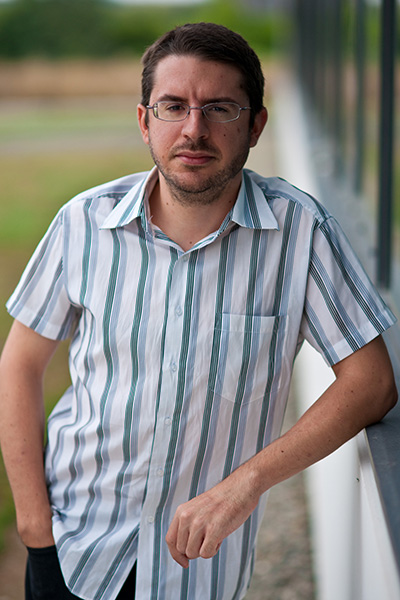 Koneki is an Eclipse Technology project providing Machine-to-Machine oriented tools, that will be released as part of the Juno release train.
Koneki is an Eclipse Technology project providing Machine-to-Machine oriented tools, that will be released as part of the Juno release train.
In this talk you will be guided through a real M2M development use case and see how Koneki can help you develop and debug an end-to-end application written in Lua.
We will also give you an overview of the other tools developed in Koneki, and share with you our project plan for the next release!
Extend Eclipse to accelerate tools qualification according to DO-330, Oscar Slotosch, Validas AG

 The road towards qualification of Eclipse-based tools is presented. It consists of the decision to use the DO-330 and to elaborate a concept how the existing Eclipse development model can be enriched to cover all aspects required from the DO-330. The next steps on the road will be to extend the Eclipse Plugin Framework within an Eclipse Project to support the concept and to validate the approach by some examples.
The road towards qualification of Eclipse-based tools is presented. It consists of the decision to use the DO-330 and to elaborate a concept how the existing Eclipse development model can be enriched to cover all aspects required from the DO-330. The next steps on the road will be to extend the Eclipse Plugin Framework within an Eclipse Project to support the concept and to validate the approach by some examples.
The concept consists of an EMF model for the required Eclipse extensions, some general documents how to work with the extended Eclipse and some plugin specific documents that could be generated from Eclipse.
The talk presents the current status of the concept and shows how it satisfies DO-330 topics like requirements, tool life cycle, configuration management, quality assurance, verification…
Dr. Oscar Slotosch has studied computer science and did his phd in formal method of the chair of Prof. Broy in Munich.
He has been leading the award-winning academic modeling tool AutoFOCUS.
He is a founder of Validas AG and expert in tool qualification and avoidance of tool qualification.
Paho, an implementation of MQTT, messaging for the Internet of Things, Andy Piper
What is Paho? In the Maori language, paho means “broadcast, make widely known, announce” – and in this talk we’d like to make sure that more Eclipse contributors get to know about Paho, a very cool messaging system recently contributed to the Foundation by IBM and Eurotech. Paho is an implementation of MQTT – a lightweight, scalable, messaging system for connected devices and the Internet of Things. We’ll look at the protocol, some example code, how Paho relates to other Eclipse projects, and talk about the roadmap and future plans to tie in with the Eclipse ecosystem
Timing Behaviors and EMF models : just married !, Mélanie Bats, Obeo and Frédéric Mallet, INRIA
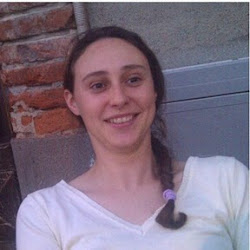 Even though Model-Driven Engineering has gained a wide acceptance, timing analysis and profiling are still dominantly performed at the code level and not yet at the model level (TPTP, Linux Tool). The ANR Project RT-Simex, which ended in April this year, aimed at putting models at the center of the analysis process. Part of the objectives were to provide an environment to capture timing requirements, simulate the expected timing behaviors and compare actual executions to the modeling requirements, all that working at the model level.
Even though Model-Driven Engineering has gained a wide acceptance, timing analysis and profiling are still dominantly performed at the code level and not yet at the model level (TPTP, Linux Tool). The ANR Project RT-Simex, which ended in April this year, aimed at putting models at the center of the analysis process. Part of the objectives were to provide an environment to capture timing requirements, simulate the expected timing behaviors and compare actual executions to the modeling requirements, all that working at the model level.
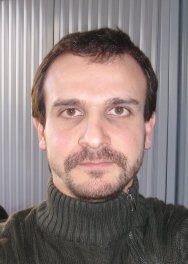 This talk gives a glimpse at some of the project results. We present an Eclipse-based environment for EMF models to describe timing specifications, simulate the models and perform some analysis. The environment is based on two tools. TimeSquare, a tool dedicated to the analysis of MARTE/CCSL models, is used to illustrate the simulation of models. oTime, an extension of the viewpoint-based framework Obeo Designer, serves to capture the timing requirements and inject real execution traces so as to compare them with the expected timing behavior.
This talk gives a glimpse at some of the project results. We present an Eclipse-based environment for EMF models to describe timing specifications, simulate the models and perform some analysis. The environment is based on two tools. TimeSquare, a tool dedicated to the analysis of MARTE/CCSL models, is used to illustrate the simulation of models. oTime, an extension of the viewpoint-based framework Obeo Designer, serves to capture the timing requirements and inject real execution traces so as to compare them with the expected timing behavior.
Mélanie Bats works at Obeo as software developer mainly focused on modeling tools for System Engineering.
Frédéric Mallet owns a PhD in Computer Sciences from University Nice Sophia Antipolis. He is now an Associate Professor. His main research activity consists in defining models adequate for the design and analysis of real-time and embedded systems. Since 2006, he has been involved in the definition of the OMG UML Profile for Modeling and analysis of Real-Time and Embedded systems and more specifically in the definition of its time and allocation subprofiles. He a permanent member of the Aoste INRIA/I3S research team.
Easy JEE application development with JBoss Tools, Xavier Coulon, Red Hat
 JBoss Tools is a set of plug-ins that integrate in the Eclipse IDE. Together with the example projects and quick starts from JBoss Central, these reveal themselves invaluable for the Java EE developer.
JBoss Tools is a set of plug-ins that integrate in the Eclipse IDE. Together with the example projects and quick starts from JBoss Central, these reveal themselves invaluable for the Java EE developer.
In this session, you will discover the coolest new features coming up in the next release of JBoss Tools: Maven integration, support for CDI and JAX-RS, and seamless deployment on local JBoss AS7 and OpenShift, the hot new Red Hat’s Platform-as-a-Service.
Documentation generation and edition with Gendoc2 and Intent,
Managing and dealing with documentation is essential in the different part of a software. This talk will present 2 ways of dealing with documents depending on the context :
- Agile/Intent : Obeo
- Gendoc2: Generate documents from EMF models and Word or OpenOffice template documents.
Some of the tools for documentation generation impose to users to define the layout and the presentation of the document in a specific tool, the goal of Gendoc2 is letting the user to use his well known Word Processors like Microsoft Word or Open Office.
This talk will present the global behavior of this tool and will detail the brand new features included in TOPCASED 5.2 :
- Hyperlink generation to create links between some parts in the document
- Gendoc2 Fragments which allow the creation of parts reusable in the template
Git + Gerrit + Tycho, Benjamin Cabé, Sierra Wireless
TOPCASED new modeling editors: customization capabilities in industry, Airbus and CNES
Since October 2011, TOPCASED releases provide new modeling editors integrated from Eclipse MDT Papyrus component. This talk will provide feedback from usage of those editors in industrial context in two domains: avionics (Airbus) and space (CNES). We will show the different areas that can be customized: palette, properties, model explorer, editor. We will underline the issues we faced and the way we could manage them. We will finish by giving perspectives.
Combining the power of Eclipse with Android, Mathias Seguy, Android2ee
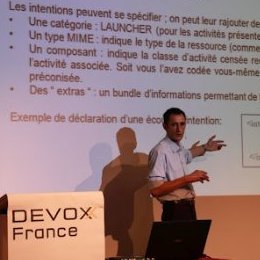 At « Eclipse Day Toulouse », Mathias will present “Combining the power of Eclipse with Android.” He will begin by installing the workspace and then make his way through two scenarios, creating a new project and analyzing an existing one thus presenting the various features of Eclipse as part of Android development. The concepts AVD, SDK Manager, graphic editors, tests on real devices or emulators, DDMS perspective and different views (logcat, Thread, Heap, …) will be addressed, leading the audience to a comprehensive understanding of the tools available in Eclipse for Android programming.
At « Eclipse Day Toulouse », Mathias will present “Combining the power of Eclipse with Android.” He will begin by installing the workspace and then make his way through two scenarios, creating a new project and analyzing an existing one thus presenting the various features of Eclipse as part of Android development. The concepts AVD, SDK Manager, graphic editors, tests on real devices or emulators, DDMS perspective and different views (logcat, Thread, Heap, …) will be addressed, leading the audience to a comprehensive understanding of the tools available in Eclipse for Android programming.
Mathias is the founder of Android2ee, a company specializing in Android Training, Consulting and Expertise. He is the author of several books on the subject (available on Android2ee.com) and articles on Developpez.com. After obtaining a Doctorate of Fundamental Mathematics and an engineering degree from ENSEEIHT, he worked for ten years on J2EE critical projects. He has been a technical expert, manager, project manager and finally technical director in his previous company. Recently, he has been focusing on courses, conferences and expertise missions associated with Android development.
Get your Graphical Editors back in the Present with GMF, Jeremy Gorszczyk, Airbus
Using the Graphical Modeling Framework (GMF) of the Integrated Development Environment Eclipse allowed a one-person-team to develop a first functional prototype for a graphical editor as a business application in 3 months. During the first month of the project, solutions have been tested for one week each with the following criteria: time of development, quality of the Human-Machine interface, stability of the solution through time. At the end of the benchmarking, the GMF solution was far the most advanced, as the Human machine interface was plenty functional, with a canvas, a palette with tool entries, a very basic editor with different symbols, and specific behaviours such as drag and drop elements from the palette and on the canvas, draw links between elements and so on. The goal of the following of the project was to customize the nodes appearance, while factorizing the code generated by the framework. After two months of full time development, the editor allows to draw diagrams in accordance with the specification language. This study shows that this framework allow to have quick and significant results, by providing easy to use tools for rich, and easy to deploy diagram editor.
Eclipse Lyo: Re-thinking tool integrations, Jean-Luc Johnson and Matthieu Helleboid, EADS
The Open Services for Lifecycle Collaboration (OSLC) is an open community with the objective to create standardized specifications of how tools, involved in different engineering lifecycles, can be integrated to exchange data and information. OSLC uses open and standard internet technologies to enable collaboration between tools.
 Eclipse Lyo is an open source project created with the goal of providing OSLC resources for developers of tool integrations. The focus of the Eclipse Lyo project is to provide an SDK for OSLC for enabling ALM tool integrations. Project content includes reference implementations, test suites, and libraries (including samples and examples).
Eclipse Lyo is an open source project created with the goal of providing OSLC resources for developers of tool integrations. The focus of the Eclipse Lyo project is to provide an SDK for OSLC for enabling ALM tool integrations. Project content includes reference implementations, test suites, and libraries (including samples and examples).
OSS Business Models
Eclipse and Polarsys Business Models, Christian Labezin, Xipp
The importance of IP management in Open Source Business Models, Black Duck
The Talend Business Model, Cedric Carbone, Talend
Open Source Software for Model Driven Development: a case study, Jonas Gamalielsson, University of Skovde
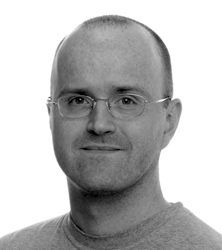 Model Driven Development (MDD) is widely used in the embedded systems domain, and many proprietary and Open Source tools exist that support MDD. The potential for sustainability of such tools needs to assessed prior to any organisational adoption. In this presentation we report from a case study conducted in a consultancy company context aiming to investigate Open Source tools for MDD. For the company it was interesting to explore the two Open Source modelling tools Topcased and Papyrus for potential adoption. The focus for our case study is on assessing the health of the ecosystems for the two investigated Open Source projects by means of quantitative analysis of publically available data sources about Open Source projects. The health of ecosystems is an important prerequisite for a long term sustainable OSS (Open Source Software) tool-chain in the MDD area, which can aid strategic decision making for potential adoption within a company context. We have established details on the extent to which developers and users are active in two specific OSS ecosystems, and identified organisational influence for both ecosystems. We find that the investigated tools are promising regarding the health of their ecosystems, and a natural next step for the company would be to proceed with a pilot study in order to analyse the effectiveness of the investigated tools in company contexts.
Model Driven Development (MDD) is widely used in the embedded systems domain, and many proprietary and Open Source tools exist that support MDD. The potential for sustainability of such tools needs to assessed prior to any organisational adoption. In this presentation we report from a case study conducted in a consultancy company context aiming to investigate Open Source tools for MDD. For the company it was interesting to explore the two Open Source modelling tools Topcased and Papyrus for potential adoption. The focus for our case study is on assessing the health of the ecosystems for the two investigated Open Source projects by means of quantitative analysis of publically available data sources about Open Source projects. The health of ecosystems is an important prerequisite for a long term sustainable OSS (Open Source Software) tool-chain in the MDD area, which can aid strategic decision making for potential adoption within a company context. We have established details on the extent to which developers and users are active in two specific OSS ecosystems, and identified organisational influence for both ecosystems. We find that the investigated tools are promising regarding the health of their ecosystems, and a natural next step for the company would be to proceed with a pilot study in order to analyse the effectiveness of the investigated tools in company contexts.
